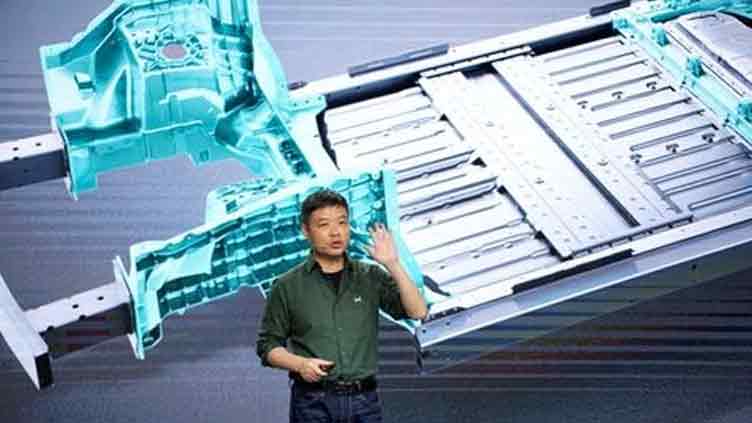China's Xpeng takes cues from Tesla for its new EV platform

Technology
The first Xpeng model to use the SEPA 2.0 platform was unveiled at this week's Shanghai show
(Reuters) - Chinese electric vehicle maker Xpeng Inc (9868.HK) is the latest manufacturer hoping to save money and speed development and production by shifting to a digital vehicle architecture - an approach that bears a striking resemblance to Tesla Inc's. (TSLA.O)
Unveiled this week ahead of the Shanghai Auto Show, Xpeng's Smart Electric Platform Architecture 2.0 has essentially the same foundation that Tesla has developed over the past two years with its Model Y: large single-piece front and rear underbody castings, joined in the center by a massive battery pack that helps to reinforce the vehicle body structure.
The first Xpeng model to use the SEPA 2.0 platform, a compact SUV called G6, was unveiled at this week's Shanghai show and is also startlingly close in dimensions and shape to the Model Y. Xpeng has said the G6 will be priced from just under $30,000, nearly $10,000 less than the lowest-priced Shanghai-built Model Y.
"It's obvious the design of the (G6) came from the Model Y," industry analyst Sandy Munro told Reuters. "This is not a surprise. (Tesla CEO) Elon Musk has said he knows other companies are going to copy him."
Six-year-old Xpeng is one of several Chinese newcomers, a group that includes Nio (9866.HK) and Li Auto (2015.HK), competing not only with Tesla but more established domestic manufacturers, including market leader BYD (002594.SZ) and Geely (0175.HK).
Based in Guangzhou, Xpeng is named for founder and CEO He Xiaopeng, the former head of Alibaba's (9988.HK) Mobile BG unit, who founded the automaker in 2017.
Xpeng's simplified vehicle platform design - in effect, a three-piece frame that is both flexible and scalable - saves on parts, tooling, development and assembly time, and appears to have been lifted from Tesla, according to Munro.
Such a platform has the potential to give Tesla, Xpeng and other automakers considering this approach a new weapon to help restore margins hit by recent price wars in China and other markets.
In Tesla's case, that basic platform is the key element in the so-called unboxed assembly process the automaker revealed at its March 1 Investor Day. Tesla executives said then that the new process, which it expects to implement next year at the company's new plant in Mexico, will enable it to dramatically shrink the factory footprint and halve production costs.
Tesla believes the new assembly process it is building around the simplified platform will enable it to put a sub-$30,000 electric vehicle into the market within the next two years.
Xpeng describes SEPA 2.0 as a “smart EV architecture” that integrates a software, data and hardware platform called X-EEA, as well as a new Xmart vehicle operating system that leverages artificial intelligence, sensors and software to control in-vehicle services and functions. All components were developed in-house, the company said.
To produce vehicles based on the new platform, a “smart manufacturing system” will be rolled out at Xpeng’s Zhaoqing and Guangzhou plants over the next two years as SEPA 2.0 is deployed across at least 10 future models, starting in late 2024 with the new G6 SUV.

